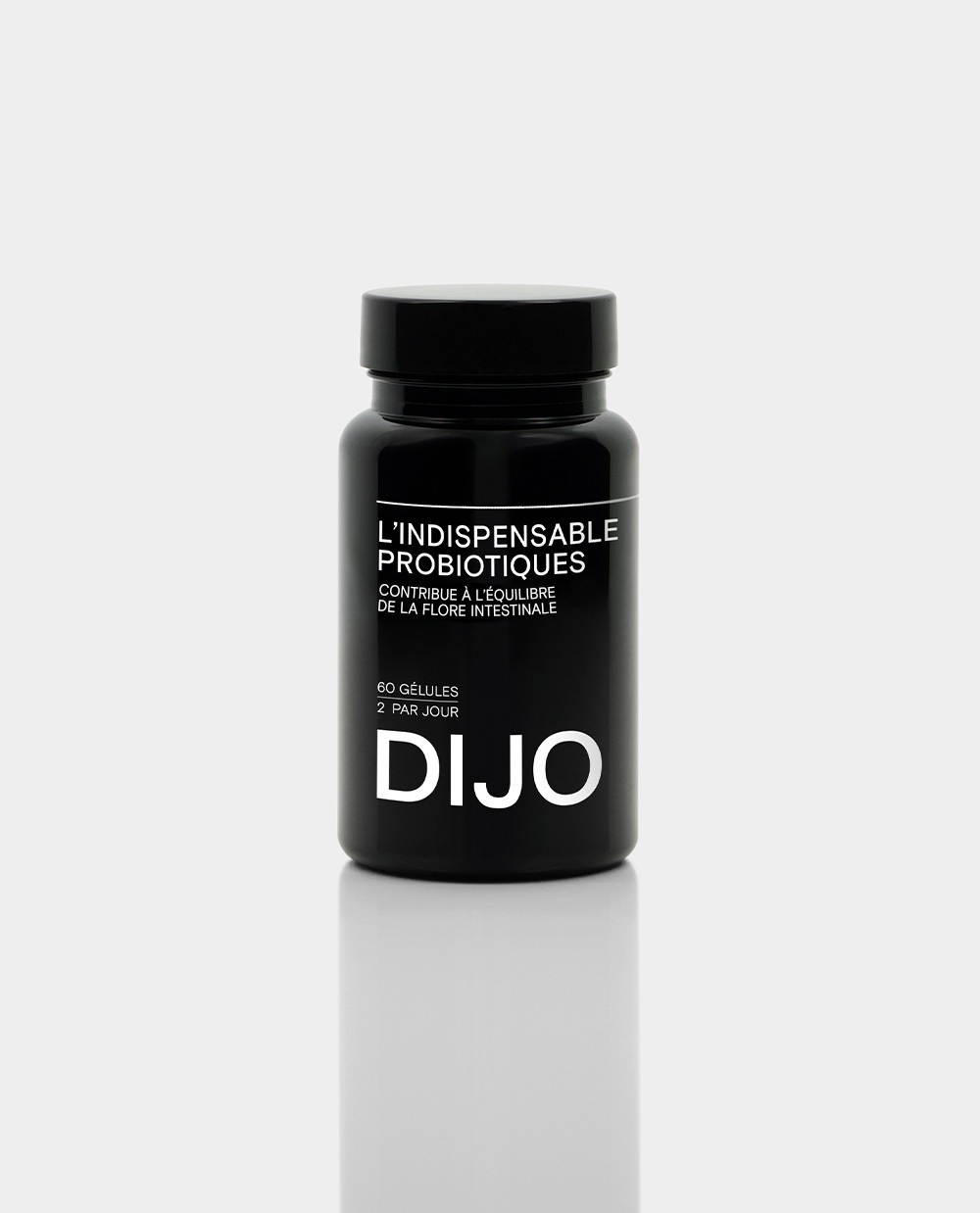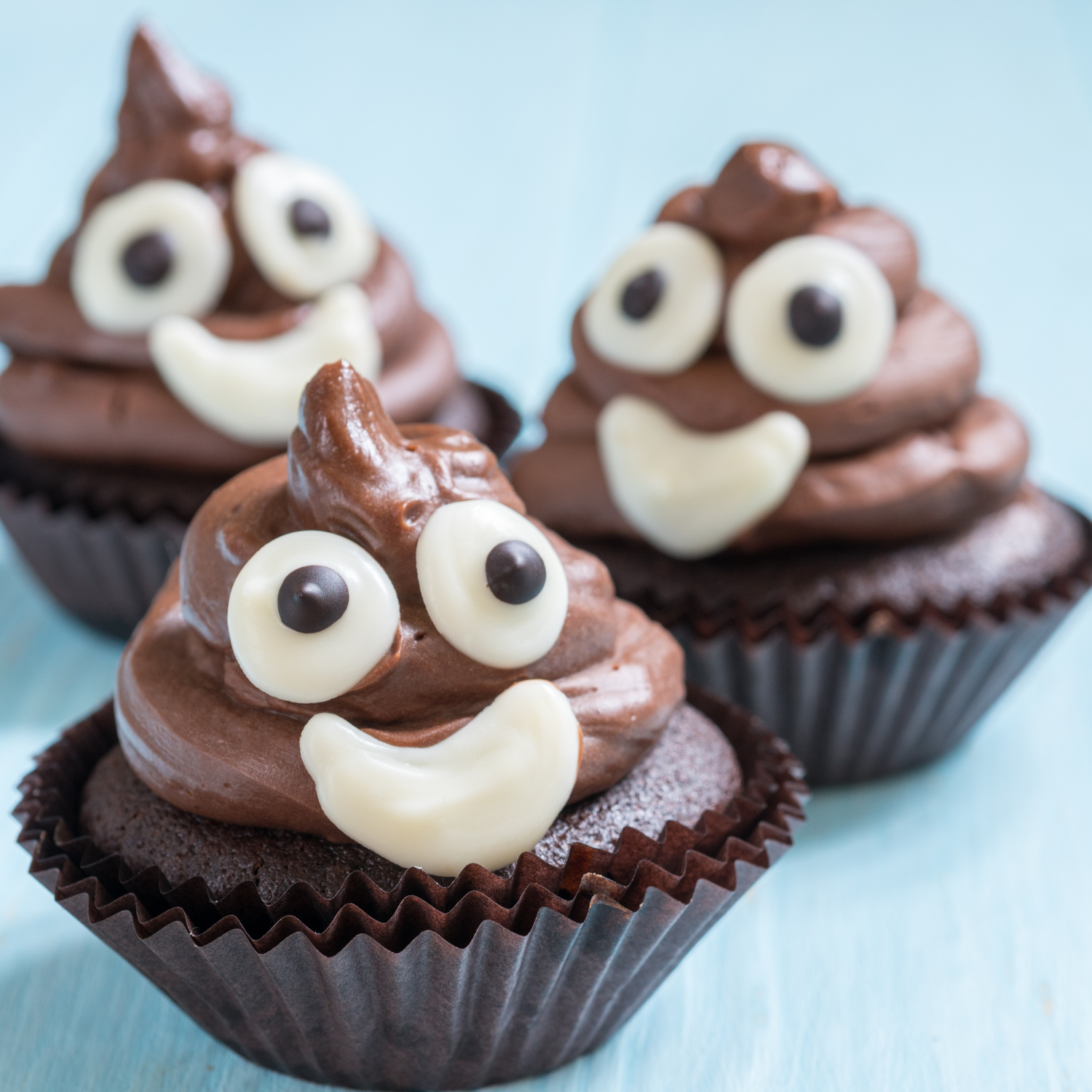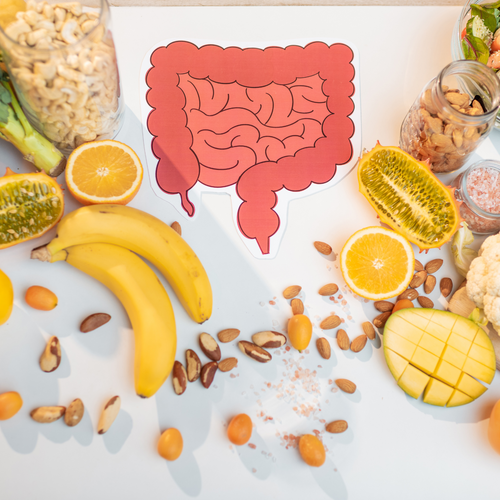Observing the color of your stool may seem trivial, but this daily detail is often indicative of your overall health. A change in color, whether sudden or gradual, raises questions and sometimes causes concern. However, stool color depends on many factors, most of which are harmless. Monitoring these variations is essential for detecting certain digestive disorders or simply adjusting your lifestyle. With Popee toilet paper, taking care of yourself also means paying attention to these small signs. If you're looking for a soft, environmentally friendly toilet paper that's suitable for the whole family, the new range of plastic-free toilet paper can gently support your daily routine.
Understanding what influences stool color
Detect common causes of color change
Know when to see a doctor
Adopt the right reflexes for your intestinal well-being
Benefit from advice for the whole family
Background and significance of stool color
Why monitor stool color changes
Stool color is a true barometer of digestive health. Although it's often perceived as an embarrassing or taboo detail, it provides information on the proper functioning of the intestine and intestinal transit. Many gastroenterologists emphasize that a sudden or persistent change can signal the presence of a disease, an infection, or the consequence of a particular diet. In most cases, the color variation is not serious, but it is essential to remain vigilant, especially if it is accompanied by other symptoms such as diarrhea, hard stools, abdominal pain, or flatulence.
Regular monitoring of stool color is a simple reflex to prevent certain digestive pathologies, but also to reassure about the good health of the intestine on a daily basis.
In short, paying attention to the color of your stools means better understanding your body and acting in time in the event of an anomaly.
Summary: Monitoring stool color allows for the rapid detection of digestive or eating disorders, but also provides reassurance about daily health.
Understanding Normal Stool Color
Definition and aspects of healthy stools
Healthy stools are generally brown in color, ranging from light to dark brown. This color results from the breakdown of bilirubin, a pigment produced by the destruction of red blood cells and transformed by bacteria in the intestine. The ideal texture corresponds to a balance between soft and hard stools, neither too liquid nor too dry, thus facilitating evacuation without pain or straining. On the Bristol Scale , a classification widely used by doctors, type 3 or 4 is considered optimal: a smooth and supple sausage shape.
Tip: Using the Bristol stool scale to compare the appearance of your stools can help identify digestive imbalance or the onset of constipation or diarrhea.
The occasional presence of small variations in color or texture remains normal, as long as it is not accompanied by symptoms such as abdominal pain or fever.
Factors influencing natural color
Several factors influence the natural color of stools. Diet plays a major role: eating a lot of green vegetables can result in a darker or greenish tint, while foods rich in fat can sometimes make stools lighter and brighter. Bacteria in the intestine also modulate the transformation of bile pigments, which explains why everyone has their own digestive “palette.” Furthermore, intestinal transit, if accelerated (as during diarrhea), prevents the complete transformation of these pigments, resulting in lighter or greenish stools.
Hydration, exercise, stress, anxiety, and certain medications complete the list of factors that can temporarily change stool color.
Temporary variations without gravity
It is not uncommon to observe temporary color changes, most often linked to the ingestion of colored foods or dietary supplements. For example, eating beets can turn stools red, while spinach gives them a green tint. Similarly, food colorings or certain medications (iron, bismuth, antibiotics) can darken or lighten stools without affecting intestinal health. In both children and adults, these phenomena are common and generally disappear within a week.
Summary: Healthy stools are usually brown. Temporary variations in color or texture are often related to diet or bowel movements and are not serious.
Common causes of stool color change
Influence of diet and colorings
Changes in stool color are frequently linked to diet. Some foods contain very strong natural pigments: carrots, for example, sometimes give an orange color, while blueberries or blackcurrants darken stools. Industrial food colorings, found in candy, sodas, or prepared foods, can also cause unusual hues. Excess fats make stools brighter and sometimes yellowish. Children, who experiment with a wide variety of foods, often experience these color changes, which are nothing to worry about.
When it comes to wiping the whole family, Popee plastic-free toilet paper rolls are suitable for all ages and gentle on sensitive skin.
Effects of medications and supplements
Many medications are known to alter the appearance or color of stools. Iron supplements, for example, very often cause black stools, as do some diarrhea treatments. Antibiotics, on the other hand, can cause a yellow or pale color, especially when they alter the bacterial flora in the intestine. Antacids, laxatives, or supplements rich in calcium or magnesium also influence the consistency (hard or liquid stools) and color. Before worrying about a change in color, it is therefore useful to check the instructions for any medications you are currently taking, or to seek advice from a doctor or practitioner.
Taking a new medication may explain a change in stool color: this phenomenon generally disappears when treatment is stopped.
Role of intestinal transit
The speed at which food passes through the intestine also determines the color of stool. In cases of accelerated intestinal transit (irritable bowel syndrome, acute diarrhea, digestive infections), incomplete digestion of bile pigments results in lighter or greenish stools. Conversely, slower transit, with constipation, leads to a darker color, hard stools, and sometimes the appearance of mucus or flatulence. The consistency, frequency, and color therefore vary depending on the health of the digestive system and lifestyle.
Summary: The most common causes of stool color changes are diet, medications, and changes in bowel habits.
Unusual Colors: Meaning and Warning Signs
Green stools: causes and implications
Green stools are often surprising, but this color is generally explained by the consumption of foods rich in chlorophyll (spinach, broccoli) or food coloring. In people with rapid intestinal transit, the bile does not have time to transform into brown pigments, hence the greenish tint. On the other hand, if green stools are accompanied by diarrhea, abdominal pain, or persistent symptoms, a digestive infection or irritable bowel syndrome may be the cause. Most of the time, this phenomenon is transient and not serious, but it is important to pay attention to the evolution and the presence of other signs.
A temporary green discoloration of stools is common in children and adults, especially after overeating vegetables or during gastroenteritis.
Black stools: causes and potential risks
Black stools (melena) are often noticeable and require special attention. They are sometimes the result of iron supplementation, certain foods (black pudding, licorice), or dietary supplements. However, the presence of black stools can also signal bleeding in the upper intestine, particularly in cases of ulcers, gastritis, or tumors. It is essential to distinguish between a color related to diet and true melena, which is often associated with a strong odor, liquid or pasty stools, and other symptoms such as fatigue, pallor, or abdominal pain. If in doubt, it is recommended to consult a doctor or gastroenterologist without delay.
Yellow or pale stools: when to worry
Yellow, pale, or discolored stools generally indicate a problem digesting fats. This can occur after a particularly rich meal, or in cases of pancreatic, liver, or gallbladder disorders (hepatitis, stones, pancreatic insufficiency). If the yellow color is accompanied by loose stools, flatulence, diarrhea, or abdominal pain, it is advisable to seek medical help to rule out the presence of a more serious illness. In children, persistent pale color should also be a warning sign, especially if there is a fever or associated symptoms.
A persistent change to yellow or discolored stools requires medical advice, as it may indicate a fat digestion disorder or liver disease.
Red or orange stools: possible explanations
The presence of red or orange stools is often explained by the consumption of beets, tomatoes, or carrots. However, the presence of red blood in the stool (hematochezia) should be taken seriously. It can come from an anal fissure, hemorrhoids, or inflammation of the colon. The orange appearance is generally benign, especially if it occurs after the consumption of pigmented foods. On the other hand, red blood associated with abdominal pain, hard stools, or fever should lead to a prompt consultation with a practitioner or gastroenterologist.
Summary: Unusual colors (green, black, yellow, red) may signal a digestive disorder or underlying disease. It is important to monitor the duration, progression, and associated symptoms.
Associated symptoms and when to consult
Changes in consistency and frequency
A change in stool color is often accompanied by changes in consistency (liquid, soft, or hard stools) and frequency. For example, sudden diarrhea, persistent hard stools, or episodes of constipation may indicate irritable bowel syndrome or an infection. The appearance of mucus, flatulence, or bloating should also raise concerns, especially if these problems last more than a week. Gastroenterologists recommend recording the frequency, appearance, and color of stools to aid in medical diagnosis.
Monitoring stool consistency, frequency and color is an effective way to spot digestive imbalance or the onset of disease.
Presence of pain, fever or other symptoms
The occurrence of abdominal pain, fever, vomiting, or weight loss associated with a change in stool color should prompt prompt medical attention. These symptoms may indicate an infection, inflammatory bowel disease, or a metabolic disorder. In children and the elderly, vigilance is increased, as complications can occur more quickly. The presence of red blood or black stools should always lead to a thorough medical examination.
Duration and evolution of color changes
Most stool color changes are temporary and resolve within a week. If the change persists, worsens, or is accompanied by symptoms (constipation, diarrhea, pain), it is necessary to consult a doctor. Monitoring over several days can help differentiate between a temporary phenomenon (related to diet) and a pathology requiring a precise diagnosis. Health centers, gastroenterologists' offices, or online consultations with a practitioner can provide specialized advice.
Summary: Consult a doctor if color changes persist, are accompanied by unusual symptoms, or affect people at risk (children, seniors).
Diagnosis and medical examinations
Questions to ask yourself before consulting
Before making an appointment with a doctor, it is helpful to ask yourself a few questions: How long has the color of your stool changed? Has there been a recent change in diet, or any new medications or supplements? Is the change accompanied by diarrhea, constipation, abdominal pain, fever, or weight loss? These factors will help the practitioner or gastroenterologist make a more accurate diagnosis and avoid unnecessary additional tests.
Take the time to note the frequency, consistency and color of stools over a week to help the healthcare professional during the consultation.
Common tests for stool analysis
The doctor may prescribe various tests to analyze the color and appearance of the stool: stool culture (to look for the presence of bacteria or infections), fat dosage, occult blood test, consistency analysis according to the Bristol scale . Depending on the case, a blood test, an abdominal ultrasound or a colonoscopy may be necessary. These additional tests are generally offered if the color change is accompanied by persistent or worrying symptoms.
Link with common digestive pathologies
A change in stool color can indicate certain digestive diseases: irritable bowel syndrome, intestinal infections, chronic inflammatory diseases (Crohn's, ulcerative colitis), thyroid disorders, liver or pancreatic diseases. Gastroenterologists rely on all the symptoms, the duration of the disease, and the results of additional tests to make a reliable diagnosis. The majority of phenomena remain benign, but vigilance should not be neglected, especially in the case of a family history or unusual symptoms.
Summary: Prepare for the consultation by noting the symptoms, carrying out the prescribed tests and following the doctor's recommendations for a reliable diagnosis.
Care and treatment
Healthy lifestyle and prevention advice
Eating a varied diet rich in fiber (fruits, vegetables, whole grains) promotes regular bowel movements and prevents both constipation and diarrhea. Proper hydration (water, herbal teas) and appropriate physical activity stimulate bowel function. Limiting fatty foods, colorings, and excess sugar reduces the risk of loose, liquid, or unusually colored stools.
For everyday hygiene, choose suitable products like Popee toilet paper, which is very soft for even the most sensitive skin and certified Ecolabel to guarantee the product's non-toxicity. Plus, their decorative Popee individual rolls are pretty and eco-friendly! Their colored paper is compostable and biodegradable, thanks to water-based inks that respect the planet. These rolls are perfect for decorating your little corners, at home, at the office, or at your loved ones' homes. A great gift idea to say thank you, hello, or congratulations to the people you love and for all everyday occasions. Right now, take advantage of a 10% discount on the pack of 24 rolls with the code: DIJO10 .
Treatments adapted according to the cause
Treatment depends on the cause of the color change: stopping or adjusting certain medications, treating an infection (antibiotics, antiparasitics), correcting an enzyme deficiency or digestive disease. In cases of irritable bowel syndrome, adjusting diet and managing stress and anxiety are often effective. Persistent or severe disorders warrant regular medical monitoring.
Medical follow-up recommended
In the presence of persistent symptoms (abdominal pain, loose or hard stools, weight loss, fatigue, fever), medical monitoring is essential. Practitioners, general practitioners, or gastroenterologists offer additional tests if necessary. Regular assessments allow for treatment adjustments, the elimination of serious illness, and the return to good digestive health.
Summary: Taking care of your gut involves diet, appropriate hygiene, stress management and careful medical monitoring in the event of unusual symptoms.
|
Saddle colors |
Possible causes |
Warning signs |
Recommended action |
|
Brown (normal) |
Balanced diet, good bowel function |
None |
Nothing to report |
|
Green |
Foods rich in chlorophyll, fast transit, colorings |
Diarrhea, persistent abdominal pain |
Monitoring, consult if persists |
|
Black |
Iron, black foods, digestive bleeding |
Fatigue, pallor, pain |
Consult quickly |
|
Yellow/Pale |
Undigested fats, liver problems |
Loose stools, fever, weight loss |
Medical consultation |
|
Red/Orange |
Colored foods, red blood |
Visible blood, pain |
Consult if persists |
FAQ
Why does the color of my stool suddenly change?
A sudden change in stool color is often related to diet, new medications, or a temporary episode of diarrhea. If the change persists for more than a week or is accompanied by symptoms such as abdominal pain, fever, or loose stools, it is recommended to consult a doctor.
What diseases can be linked to a change in stool color?
Certain digestive diseases (irritable bowel syndrome, infections, liver, pancreatic, or thyroid disorders) can cause a lasting change in stool color. Other symptoms, such as fatigue, weight loss, or abdominal pain, should prompt a consultation for a precise diagnosis.
Can stress affect stool color?
Yes, stress and anxiety affect bowel movements and can cause diarrhea or hard stools, sometimes resulting in a change in color. A single episode of intense stress is enough to temporarily change the appearance and color of stools, but it is not serious if it does not last.
When should you be concerned about a color change?
It is advisable to be concerned if the change persists for more than a week, is accompanied by abdominal pain, fever, the presence of red blood or black stools, or affects fragile people (children, seniors). Medical advice can rule out a serious illness.
Which foods change stool color the most?
The most common foods are: beets (red), spinach and broccoli (green), carrots (orange), blueberries (black-purple). Food colorings present in candy and soda also affect the color. These changes are temporary and not serious.
In summary, stool color is a valuable indicator of intestinal health and bowel movements. Temporary variations, often related to diet or medication, are generally harmless. In the event of persistent changes or associated symptoms, it is essential to consult a doctor or specialist.
At Popee, they encourage small everyday actions that make a big impact: monitoring your digestive well-being and choosing healthy toilet paper that doesn't irritate, like Popee toilet paper without plastic packaging that takes care of your bottom and the planet.
To remember
-
Regularly observe the color and consistency of stools
-
Adapt your diet for optimal transit
-
Use hygiene products that respect health and the environment
-
Consult a doctor if symptoms persist
-
Pass on these good practices to the whole family
Sources :















